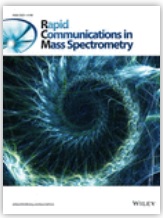Rationale
The main feature of the fragmentation of [M − H]− ions of methoxylated flavonoids is the loss of methyl radical (formation of the [M − H − CH3]−• product ion). Subsequent decomposition of [M − H − CH3]−• product ions may be useful for identification of a given compound by HPLC/MS. This paper describes how the selected diagnostic fragment ions can be useful during HPLC/MS(−) analysis of methoxylated flavonoids.
Methods
Product ion spectra (ESI‐CID‐MS/MS spectra) of [M − H]− ions of 17 methoxylated flavonoids (flavones, isoflavones and flavonols) were obtained with a Q‐TOF mass spectrometer. Full scan mass spectra (ESI‐MS) were obtained with a single quadrupole type of instrument.
Results
A number of product ions were recognized as useful from the point of view of structural elucidation. In most cases they were diagnostic product ions, formed as a result of C ring breaking.
Conclusions
The most important conclusions drawn from this study are: the product ion at m/z 132 indicates that the analysed compound is an isoflavone; the product ion at m/z 117 indicates the presence of one hydroxy group at ring B or at the 3‐position; biochanin A and prunetin can be differentiated by their ‘in‐source’ fragmentation, by the relative abundances of product ions at m/z 195, 183 and 167; loss of mass 102 from the [M − H − CH3]−• ion indicates that ring B is not substituted and there is no hydroxy group at the 3‐position; and rhamnetin can be detected using three diagnostic product ions, namely at m/z 121, 165 and 193.

